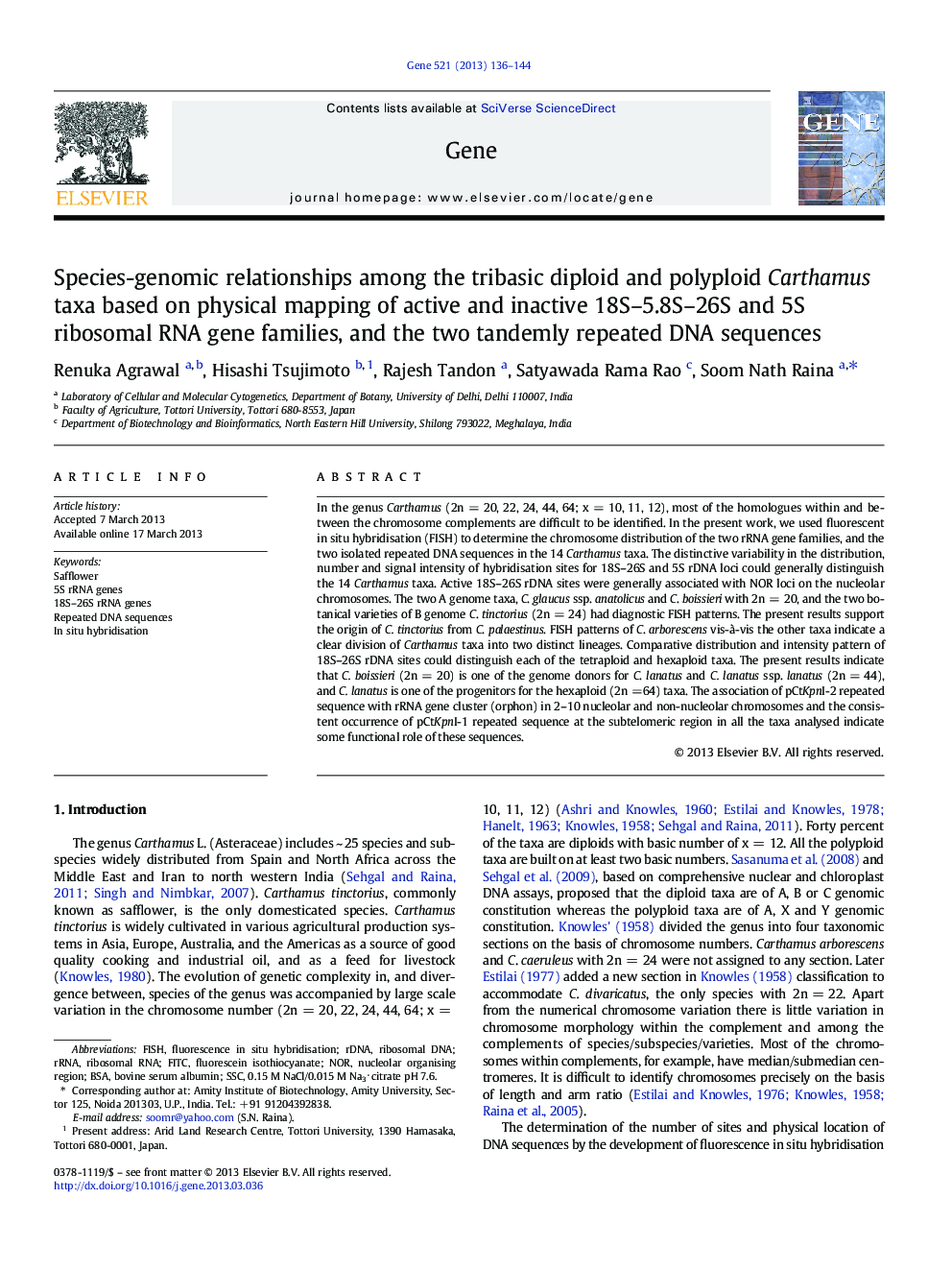| Article ID | Journal | Published Year | Pages | File Type |
|---|---|---|---|---|
| 2817269 | Gene | 2013 | 9 Pages |
•Two rRNA gene families and two repeated DNA sequences were mapped on Carthamus taxa.•Active 18S–26S rDNA sites were generally associated with NOR loci.•Species-genomic relationships among diploids and polyploids could be resolved.•Probable progenitors of polyploids were identified.•Two isolated repeated DNA sequences are of functional significance.
In the genus Carthamus (2n = 20, 22, 24, 44, 64; x = 10, 11, 12), most of the homologues within and between the chromosome complements are difficult to be identified. In the present work, we used fluorescent in situ hybridisation (FISH) to determine the chromosome distribution of the two rRNA gene families, and the two isolated repeated DNA sequences in the 14 Carthamus taxa. The distinctive variability in the distribution, number and signal intensity of hybridisation sites for 18S–26S and 5S rDNA loci could generally distinguish the 14 Carthamus taxa. Active 18S–26S rDNA sites were generally associated with NOR loci on the nucleolar chromosomes. The two A genome taxa, C. glaucus ssp. anatolicus and C. boissieri with 2n = 20, and the two botanical varieties of B genome C. tinctorius (2n = 24) had diagnostic FISH patterns. The present results support the origin of C. tinctorius from C. palaestinus. FISH patterns of C. arborescens vis-à-vis the other taxa indicate a clear division of Carthamus taxa into two distinct lineages. Comparative distribution and intensity pattern of 18S–26S rDNA sites could distinguish each of the tetraploid and hexaploid taxa. The present results indicate that C. boissieri (2n = 20) is one of the genome donors for C. lanatus and C. lanatus ssp. lanatus (2n = 44), and C. lanatus is one of the progenitors for the hexaploid (2n = 64) taxa. The association of pCtKpnI-2 repeated sequence with rRNA gene cluster (orphon) in 2–10 nucleolar and non-nucleolar chromosomes and the consistent occurrence of pCtKpnI-1 repeated sequence at the subtelomeric region in all the taxa analysed indicate some functional role of these sequences.
